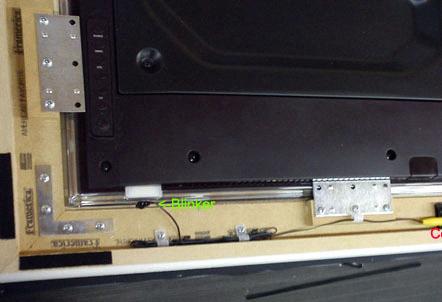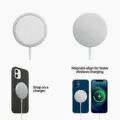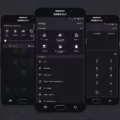Samsung TVs are known for their advanced features and user-friendly design. One important feature that many Samsung TVs have is the IR sensor, which allows you to control the TV using a remote control. In this article, we will take a closer look at the Samsung TV IR sensor and its location on different models.
The IR (infrared) sensor on a Samsung TV is responsible for receiving signals from the remote control. This allows you to change channels, adjust the volume, and perform various other functions without having to manually operate the TV. The IR sensor acts as a receiver, picking up the signals sent by the remote control and translating them into commands that the TV can understand.
The location of the IR sensor may vary depending on the model and year of the Samsung TV. In most cases, you will find the IR sensor at the bottom middle or the bottom right of the TV. You can easily identify the IR sensor by looking for a small window or lens-like structure in that area. This is where the sensor picks up the infrared signals from the remote control.
To check if the IR sensor is turned on or off, you can use the button located at the bottom of the TV. With the TV turned on, push the button to the left to turn the sound sensor on, or to the right to turn it off. A pop-up window will appear on the TV screen, indicating whether the sound sensor is enabled or disabled.
It is important to note that some Samsung TVs also have a light sensor in addition to the IR sensor. In certain models, these sensors may be located side-by-side. However, in some cases, the light sensor is positioned in the center of the bottom bezel, while the IR sensor is located in the lower-right corner of the bezel. When using the remote control, make sure to point it at the IR sensor, not the light sensor, to ensure proper functionality.
If you are experiencing issues with the remote control not working properly, you can try resetting it. Remove the batteries from the remote control and then press the Power button for 8 seconds. This will reset the remote control. Afterward, reinsert the batteries and try using the remote control again. This simple reset process can often resolve any remote control-related issues.
The IR sensor is an important component of Samsung TVs that allows for convenient remote control operation. The location of the IR sensor may vary depending on the model and year of the TV. By understanding its location and functionality, you can ensure proper usage and troubleshoot any issues that may arise.
Where Is The IR Sensor Samsung TV?
The IR sensor on a Samsung TV is typically located either at the bottom middle or the bottom right of the TV. The exact placement may vary depending on the specific model and year of the TV. The purpose of the IR sensor is to receive signals from an infrared remote control, allowing the user to control the TV’s functions remotely. It is important to note that the location of the IR sensor may differ between different TV models, so it’s always a good idea to refer to the user manual or the manufacturer’s website for accurate information regarding your specific Samsung TV model.

Where Is Sensor Button On Samsung TV?
The sensor button on a Samsung TV is located at the bottom of the TV. It is a physical button that can be pushed to the left or right. To find the button, simply look for a small button on the bottom edge of the TV. It is usually labeled with an icon representing a sound wave or microphone.
How Do I Find My Infrared Sensor?
To locate the infrared (IR) sensor on your TV, you need to first determine the model and make of your television. The location of the IR sensor can vary depending on the TV brand and model. Here are a few common ways to find the IR sensor:
1. Check the user manual: The user manual provided with your TV usually contains information about the location of the IR sensor. Look for a section that discusses the physical features and components of your TV, or search for keywords like “IR sensor” or “remote control sensor” in the manual. The manual may also provide illustrations or diagrams to help you locate the sensor.
2. Look for a small window or opening: In many TVs, the IR sensor is located behind a small window or opening on the front panel. This window allows the infrared signals from the remote control to reach the sensor. Examine the front of your TV carefully, especially around the bezel area. The sensor is typically a small, dark-colored component.
3. Use a flashlight: If you are unable to identify the IR sensor visually, you can use a flashlight to assist you. Turn on the flashlight and shine it on different areas of the TV’s front panel. The IR sensor should reflect the light differently compared to other parts of the TV, making it easier to spot.
4. Check for a label or marking: Some TVs have a label or marking near the IR sensor, indicating its location. Look for words like “IR” or “remote control” near the sensor area.
5. Consult the manufacturer’s website: If you are still unable to locate the IR sensor, visit the manufacturer’s website and search for support or product information related to your TV model. They may have specific instructions or diagrams to help you find the sensor.
Remember, the IR sensor is typically located on the front of the TV, but the exact placement can vary. Take your time to inspect the TV carefully, following any provided instructions, and make sure you are pointing your remote control directly towards the identified IR sensor for optimal signal transmission.
How Do You Reset The Remote Sensor On A Samsung TV?
To reset the remote sensor on a Samsung TV, you can follow these steps:
1. Remove the batteries from the remote control. This will ensure that there is no power source connected to the remote.
2. Press and hold the Power button on the remote control for approximately 8 seconds. This step will discharge any residual power in the remote and reset its settings.
3. While still holding the Power button, reinsert the batteries into the remote control. Make sure they are properly aligned with the polarity markings (+ and -) inside the battery compartment.
4. Release the Power button. The remote control should now be reset and ready to use.
To test if the remote control is functioning properly, point it towards the TV and press any button. If the TV responds to the remote commands, then the reset was successful.
If the remote control still doesn’t work after performing these steps, you may need to replace the batteries with fresh ones or contact Samsung support for further assistance.
Conclusion
Samsung TVs are equipped with a variety of features and functionalities that enhance the overall viewing experience. From stunning picture quality to smart TV capabilities, Samsung TVs offer a wide range of options for consumers to choose from. Additionally, the inclusion of IR sensors allows for seamless communication with external devices, such as speakers or soundbars. It is important to note that the location of the IR sensor may vary depending on the model and year of the TV, so it is crucial to ensure that the remote control is pointed directly at the sensor for optimal performance. If you are experiencing any issues with the remote control, such as unresponsiveness, it is recommended to reset the remote by removing the batteries and holding the Power button for 8 seconds before reinserting the batteries. Samsung TVs are known for their high quality and innovative features, making them a popular choice among consumers.








